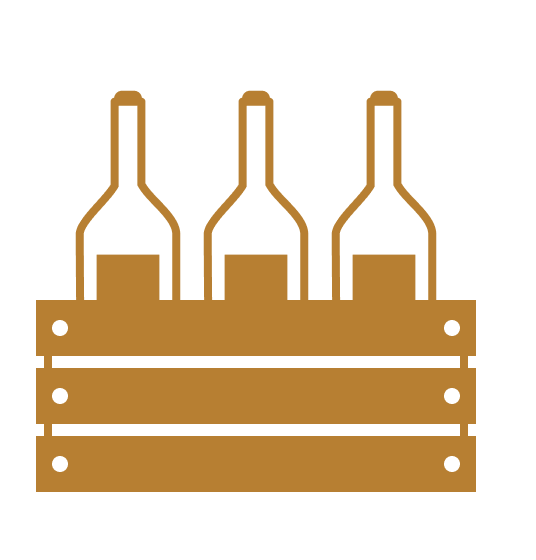


Découvrez les domaines & vins Bourgogne
Burgundy, one of the world's most romantic wine regions
Classified as a UNESCO World Heritage Site in 2015, Burgundy has been shaped by over 2,000 years of history. Burgundy has been growing grapes since Gallo-Roman times, but it wasn't until the 7th century that... More information


DOMAINE COCHE-DURY

DOMAINE DES LAMBRAYS

DOMAINE DU COMTE DE LIGER-BELAIR

DOMAINE GEORGES MUGNERET-GIBOURG

DOMAINE JACQUES PRIEUR

DOMAINE LEROY

DOMAINE OLIVIER LEFLAIVE

DOMAINE PONSOT

LOUIS LATOUR

VINCENT GIRARDIN
Découvrez les domaines & vins Bourgogne
Burgundy, one of the world's most romantic wine regions
Classified as a UNESCO World Heritage Site in 2015, Burgundy has been shaped by over 2,000 years of history. Burgundy has been growing grapes since Gallo-Roman times, but it wasn't until the 7th century that its reputation was established by powerful monasteries. Benedictine and Cistercian monks, along with the Valois Dukes of Burgundy, began to structure the vineyards into parcels known as climats, building the first clos and laying the foundations for Burgundian viticulture.
Climats have shaped Burgundy's landscapes, a clos being a plot of land surrounded by walls, testifying to the ancestral relationship of communities with a territory. The route des Grands Crus de Bourgogne is the oldest in France. Burgundy's vineyards are dominated by two colors: Chardonnay and Pinot Noir, the most famous international grape varieties. Burgundy wines have set world standards for both red and white wines. They are renowned for their inimitable elegance and complexity.
Key characteristics of Burgundy
Located in eastern France, Burgundy may seem small compared to other French regions such as Bordeaux. It covers an area of 30,000 hectares, stretching from north to south along a very narrow 230 km strip of land, but its influence on the world of wine is considerable. Burgundy enjoys a semi-continental climate, with cold winters and hot summers. Burgundy produces a wide variety of wines, ranging in quality from good to exceptional. Vineyards are planted between 200 and 500 meters above sea level, on the east/southeast slopes of the hills, on mainly clay-limestone soils that drain well and benefit from the effects of the wind.
Each year, Burgundy produces an average of 1.45 million hectolitres. The average size of a wine estate is less than 7 hectares. Climats are classified into a hierarchy of appellations. With 84 appellations d'origine contrôlée, only 1% of production is classified as Grand Cru.
A small wine-growing region with great terroirs
Côte d'Or is the region that includes Côte de Nuits and Côte de Beaune. It is the Burgundy region producing the most Grands Crus and Premiers Crus.
The Côte de Nuits is a Pinot Noir paradise. Stretching some twenty kilometers from south of Dijon to south of Nuits-Saint-Georges, the Côte de Nuits produces Burgundy's most sought-after red wines, as well as some very fine white wines. Among the most prestigious appellations are Vosne-Romanée, Gevrey-Chambertin and Echezeaux.
The Côte de Beaune is the home of Chardonnay. A land renowned for the production of these white wines, it lies in the extension of the Côte de Nuits. Meursault and Montrachet are among the Côte de Beaune's most iconic appellations.
A REGION WITH WORLDWIDE INFLUENCE
The classification of the climats de Bourgogne as a UNESCO World Heritage Site on July 4, 2015 is recognition of the living heritage of this wine-growing region, built and shaped by man for 2,000 years. It is also the worldwide recognition of a unique model of viticulture based on Climats and two mono varietals.
The Hospices de Beaune was founded in 1443. The annual auction, held at Beaune's Hôtel-dieu, attracts wine lovers from all over the world in November. The charitable activities carried out by the Hospices are financed by the sale of wine from the 58 hectares of vines they own.
CLIMAT AND LIEU-DIT, WHAT'S THE DIFFERENCE?
-
Climat: is linked to the notion of terroir. Since the Middle Ages, Burgundy has carefully delimited parcels of vineyards. These delimited plots of land have a specific history, a very particular soil, a microclimate (hydric, exposure) and unique characteristics. There are over 1,800 in Burgundy. The name Climat can be derived from a variety of sources: the environment, heritage, know-how and history. In Europe between the 16th and 18th centuries, wine merchants established the "terroir" wine model and the Climats. Climat gives a wine its own character, expression and personality, making it unique.
-
Lieu-dit: This is an administrative term. It designates a part of a plot of land that will be adopted in French land registers. Often, the lieu-dit gives its name to the climat.
Our sales team will be delighted to advise you and meet your requirements in terms of rare wines and collectors' wines available in limited quantities or under allocation (Rayas, Selosse, ...). To send us your requests, please send an e-mail to: contact@mwineted.com





